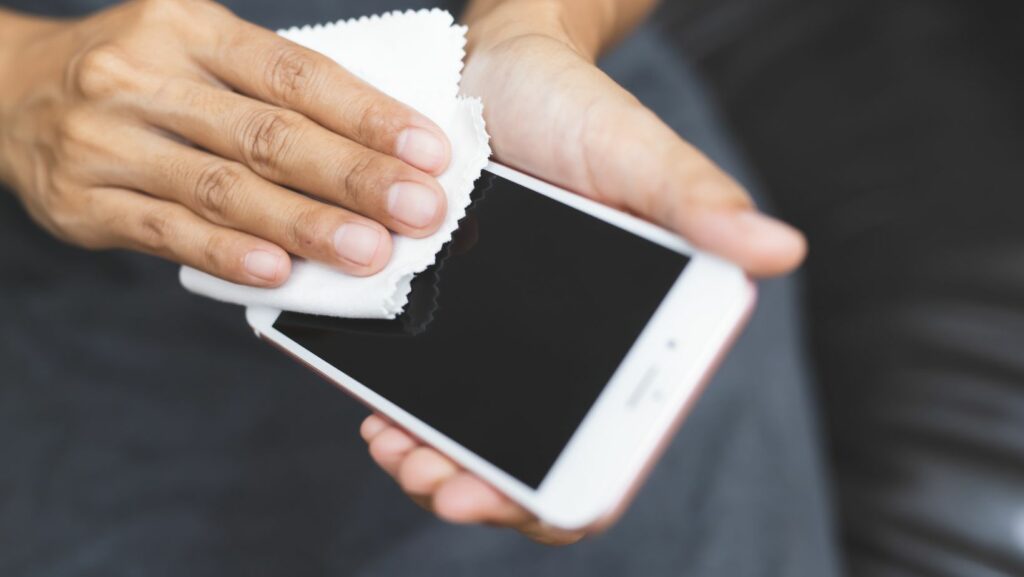In a world where aesthetics and functionality often intertwine, the importance of surface protection has never been more pronounced. Imagine the perfection of a brand-new smartphone without a smudge or the elegance of a stainless-steel refrigerator without those telltale fingerprints. The secret behind maintaining such pristine appearances lies in the marvels of modern science, which has brought forth a plethora of solutions designed to keep surfaces immaculate. From the minutiae of our daily devices to the vast expanses of architectural marvels, shielding surfaces have undergone transformative advancements.
Surface Protection: A Historical Overview
The journey of surface protection began with the simple act of polishing. Ancient civilizations used natural substances like beeswax to impart a shiny finish to metallic objects. As time progressed, varnishes and sealants derived from tree resins found their way onto wooden surfaces to protect and enhance their longevity. Fast forward to today, and we’re amidst a revolutionary change. Now, not only do we desire protection, but we also seek invisibility in this shield. This is where breakthroughs like anti fingerprint coatings come into play, ensuring surfaces remain spotless while retaining their original look.
Tiny Tech, Tremendous Impact
On a microscopic scale, surface protectors have evolved dramatically:
- Nanotechnology: At the intersection of science and engineering, nanotechnology manipulates individual atoms and molecules. By employing this technology in surface protection, we can create layers that are incredibly thin yet exceptionally robust.
- Self-healing Polymers: Imagine a scratch on your car healing itself! This isn’t science fiction but a reality, thanks to polymers designed to regain their shape and appearance after being damaged.
- Oleophobic and Hydrophobic Coatings: These specialized coatings repel water and oils, making surfaces resistant to stains and easy to clean.
The Age of Anti-Fingerprint Coatings
Fingerprints can be particularly pesky. They’re a common enemy of many surfaces, from the screens of our devices to kitchen appliances:
- How They Work: These coatings are typically made using nanotechnology. When applied, they create a surface layer that minimizes the adherence of natural oils from the skin.
- Applications: Beyond just smartphones and tablets, anti-fingerprint coatings are now found on cameras, wearables, and household appliances. They preserve the sleek appearance and reduce the need for constant cleaning.
Surfaces Beyond Gadgets
The advancements in surface protection aren’t limited to just personal gadgets:
- Automotive Industry: Cars, both interior and exterior, benefit from protective coatings. Whether it’s to maintain the shine of the paint, protect leather seats, or ensure the dashboard remains dust-free, these advancements play a pivotal role.
- Architecture and Construction: Modern buildings, with their extensive use of glass and metals, employ advanced coatings to ensure longevity, reduce maintenance, and enhance appearance. From skyscraper windows to intricate interiors, protection is paramount.
- Fashion and Footwear: Yes, even the clothes we wear and the shoes we adorn can be treated with protective substances. This ensures they remain resistant to stains, water, and daily wear and tear.
Sustainability in Surface Protection
As with many modern innovations, there’s a growing emphasis on ensuring these advancements are sustainable:
- Eco-friendly Formulations: Modern coatings are increasingly being formulated without harmful chemicals, making them safer for the environment and the user.
- Durability Equals Sustainability: The longer a surface retains its pristine appearance, the lesser the need for replacements and extensive cleaning, leading to reduced environmental impact.
- Reduced Cleaning Requirements: With superior protective coatings, the need for frequent cleaning diminishes. This not only saves time but also reduces the usage of cleaning agents, many of which can be harmful to the environment.
Looking Ahead: The Future of Surface Protection
With rapid advancements in technology and materials science:
- Smart Surfaces: The future may see surfaces that can change their properties based on external conditions, such as temperature or light.
- Improved Integration: As devices become slimmer and designs more intricate, the integration of protective layers without adding bulk will be crucial.
- Broader Application Spectrum: As the benefits become more evident, a broader range of industries and products will adopt these protective measures.
Celebrating the Unseen Protectors
As the adage goes, “It’s what’s on the inside that counts.” In the context of surface protection, it’s the almost invisible shield that truly counts. From ensuring our smartphones remain smudge-free to guaranteeing our cars shine as brilliantly as the day we bought them, these advancements work silently in the background. So, the next time you marvel at a spotless surface, remember the tiny yet tough technologies at play, and there are many more innovations in the realm of shielding surfaces!




More Stories
How Does Cloud-Based Claims Software Improve Accessibility for Adjusters: Key Benefits Explained
The True Future of AI Customer Support
Here’s Why Desktop PCs Are Still Popular